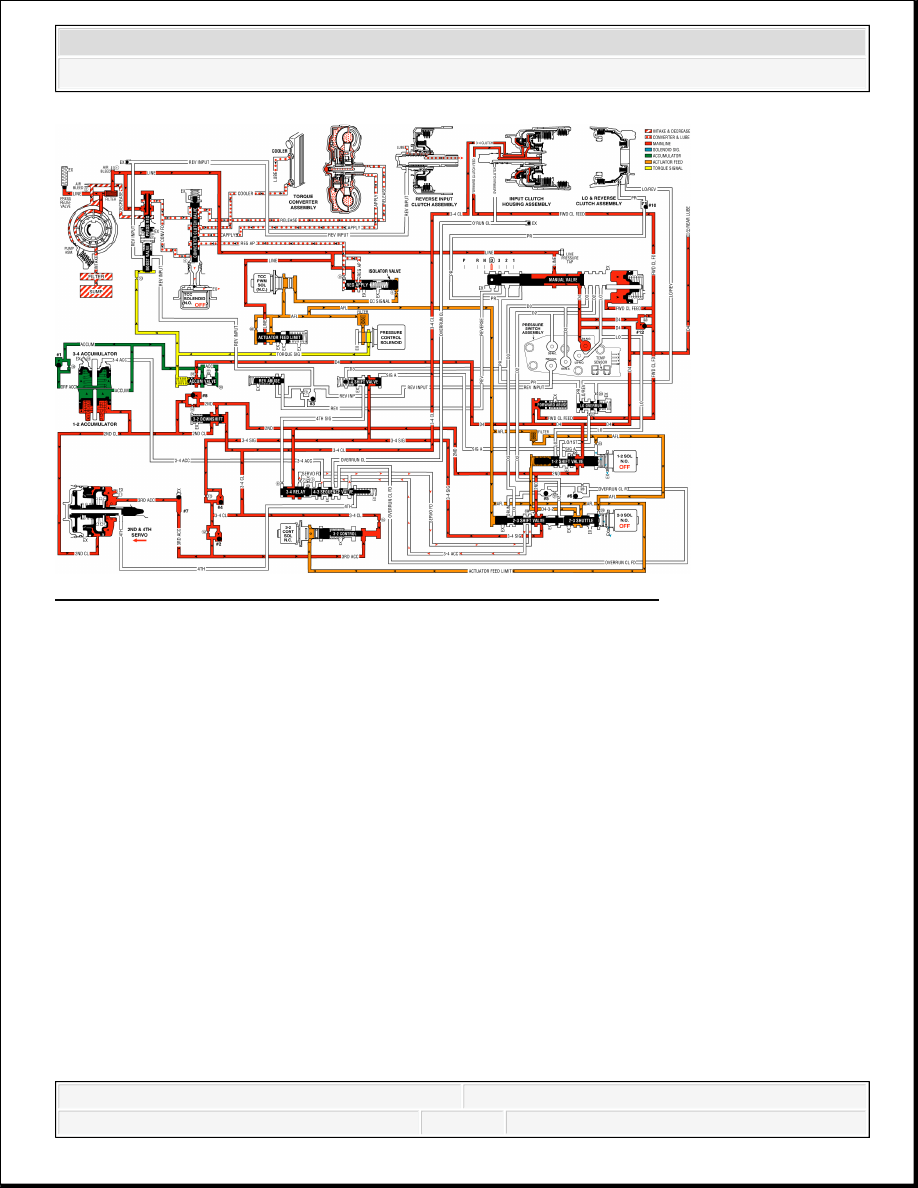Hummer H3. Manual - part 872

Fig. 491: Overdrive Range, Third Gear Hydraulic Circuit Diagram
Courtesy of GENERAL MOTORS CORP.
OVERDRIVE RANGE, FOURTH GEAR - TORQUE CONVERTER CLUTCH APPLIED
At higher vehicle speeds, the Hydra-matic 4L60-E transmission uses an overdrive gear ratio
(fourth gear) in order to increase fuel economy and in order to maximize engine performance.
When vehicle operating conditions are appropriate, the PCM energizes the 1-2 shift solenoid
valve to shift the transmission into fourth gear.
1-2 Shift Solenoid (SS) Valve
Energized (turned ON) by the PCM, the normally open solenoid closes and blocks signal A fluid
from exhausting through the solenoid. This creates pressure in the signal A fluid circuit.
2-3 Shift Solenoid (SS) Valve
De-energized (OFF) as in third gear, the 2-3 shift solenoid valve exhausts signal B fluid through
the solenoid.
1-2 Shift Valve
D432 fluid pressure from the 2-3 shift valve and spring force hold the valve in the upshift position
2007 Hummer H3
2007 TRANSMISSION Automatic Transmission - 4L60-E/4L65-E/4L70-E - H3